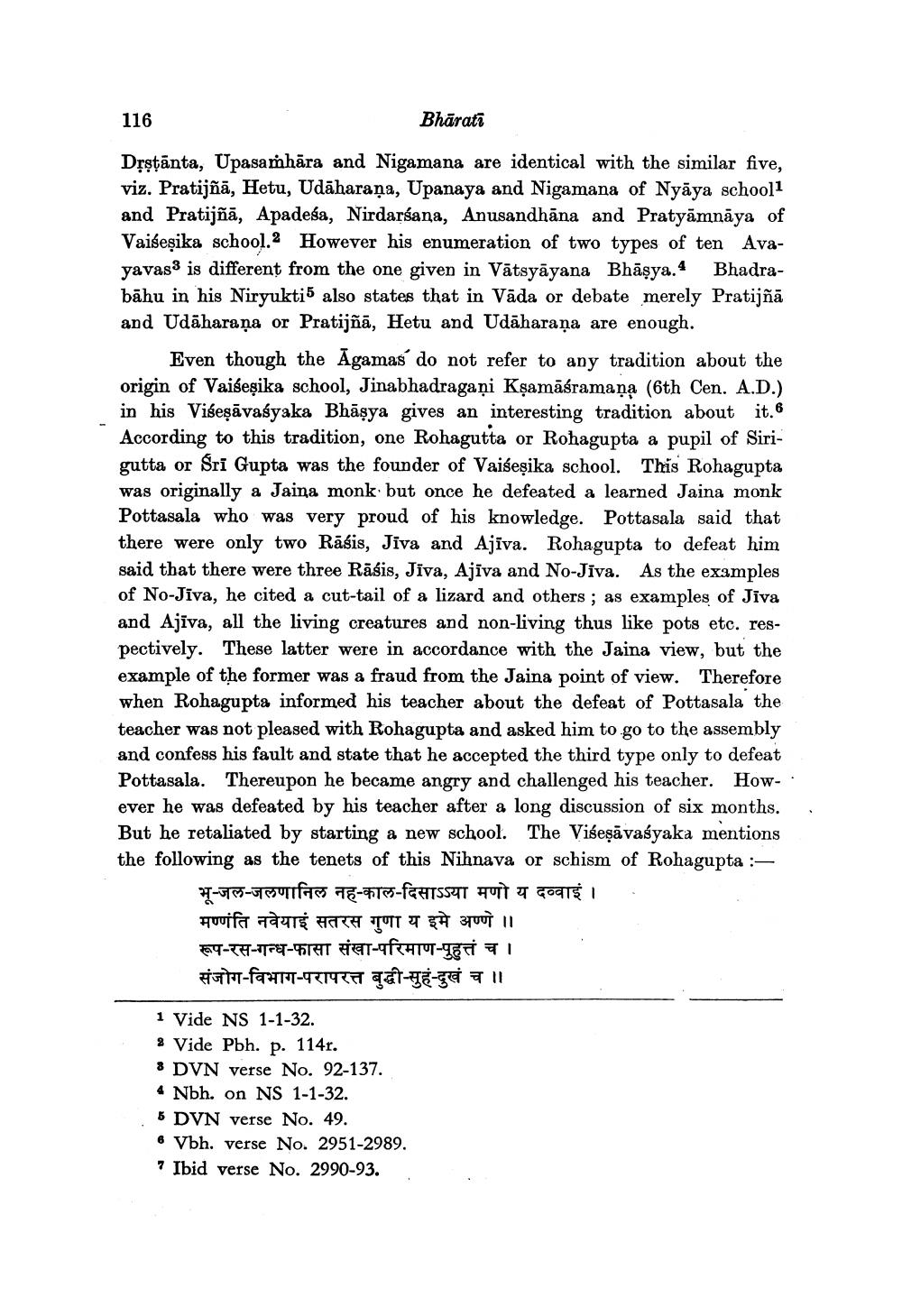________________
116
Bhārati
Drstānta, Upasamhāra and Nigamana are identical with the similar five, viz. Pratijñā, Hetu, Udāharaṇa, Upanaya and Nigamana of Nyāya school1 and Pratijñā, Apadeśa, Nirdarsana, Anusandhāna and Pratyāmnāya of Vaiseșika school. However his enumeration of two types of ten Avayavas3 is different from the one given in Vātsyāyana Bhāşya.4 Bhadrabāhu in his Niryukti5 also states that in Vāda or debate merely Pratijñā and Udāharaṇa or Pratijñā, Hetu and Udāharaņa are enough.
Even though the Agamas do not refer to any tradition about the origin of Vaiseșika school, Jinabhadragaại Kșamāśramana (6th Cen. A.D.) in his Viseşāvaśyaka Bhāşya gives an interesting tradition about it. 6 According to this tradition, one Rohagutta or Rohagupta a pupil of Sirigutta or Sri Gupta was the founder of Vaiseșika school. This Rohagupta was originally a Jaina monk but once he defeated a learned Jaina monk Pottasala who was very proud of his knowledge. Pottasala said that there were only two Rāsis, Jiva and Ajīva. Rohagupta to defeat him said that there were three Rāsis, Jiva, Ajiva and No-Jiva. As the examples of No-Jiva, he cited a cut-tail of a lizard and others; as examples of Jiva and Ajiva, all the living creatures and non-living thus like pots etc. respectively. These latter were in accordance with the Jaina view, but the example of the former was a fraud from the Jaina point of view. Therefore when Rohagupta informed his teacher about the defeat of Pottasala the teacher was not pleased with Rohagupta and asked him to go to the assembly and confess his fault and state that he accepted the third type only to defeat Pottasala. Thereupon he became angry and challenged his teacher. However he was defeated by his teacher after a long discussion of six months. But he retaliated by starting a new school. The Višeşāvaśyaka mentions the following as the tenets of this Nihnava or schism of Rohagupta :
भू-जल-जलणानिल नह-काल-दिसाऽऽया मणो य दव्वाई। . मण्णंति नवेयाइं सतरस गणा य इमे अण्णे ।। 64-TH-FET-14T Bar-f<HTT-ETTI संजोग-विभाग-परापरत्त बुद्धी-सुहं-दुखं च ॥
1 Vide NS 1-1-32. 2 Vide Pbh. p. 114r. 8 DVN verse No. 92-137. 4 Nbh. on NS 1-1-32. 5 DVN verse No. 49. 6 Vbh. verse No. 2951-2989.
Ibid verse No. 2990-93.




